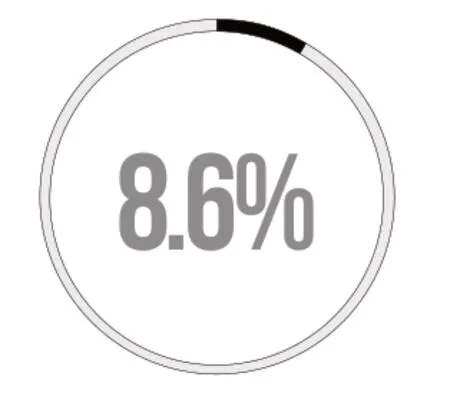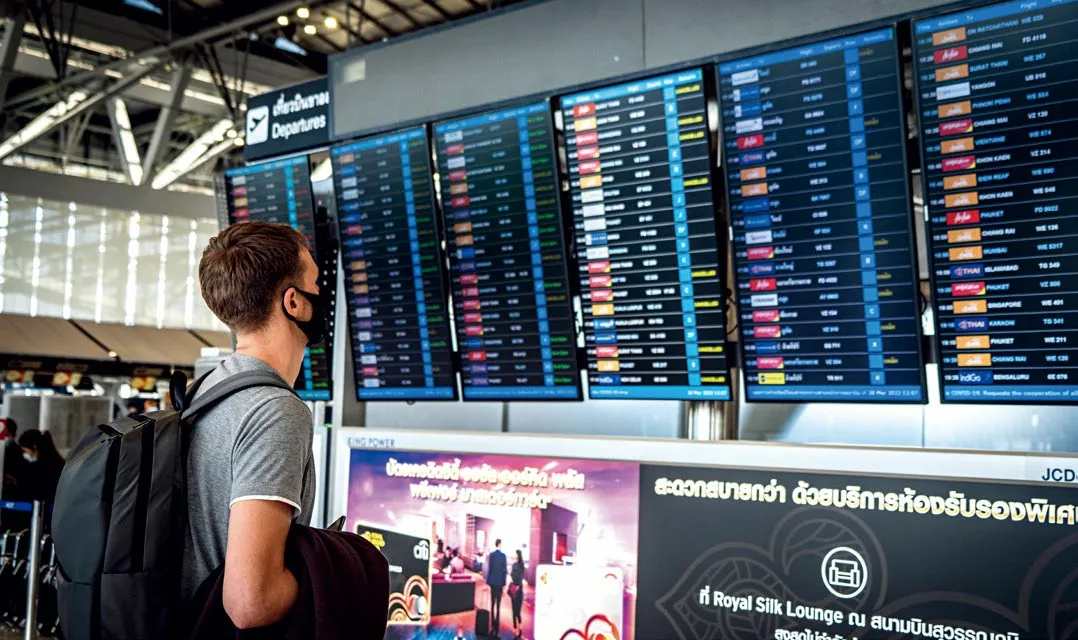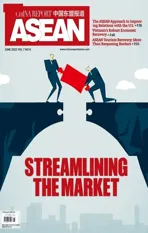ASEAN Tourism Recovery:More Than Reopening Borders
2022-06-23ByHuYukun
By Hu Yukun
Southeast Asian countries’unilateral efforts will be far from enough to boost tourism to pre-pandemic levels

A lifeguard on the main beach of Boracay,Aklan,the Philippines,March 23,2022.Almost 100,000 tourists arrived in fvie weeks through March as the Philippines reopened to 157 visa-free countries.(VEEJAY VILLAFRANCA)
For ASEAN countries,the COVID-19 conundrum this spring has become even more difficult,exacerbated by the Omicron variant and Russia-Ukraine conflict.The region’s key tourism industries have been among the hardest hit,and are now regarded by these governments as the launch pad for economic recovery.
Now that the answer,reopening borders to international tourists,is becoming increasingly clear to leaders of these countries,that move is only the easy part.Unilateral effort by ASEAN alone will hardly boost its tourism to pre-pandemic levels.
When Border Control Becomes Unaffordable
In early 2020,Southeast Asia was one of the first regions to be affected by the outbreak of COVID-19“because of its close geographical proximity and business travel,tourism,and supply chain links to China,”according to the Organisation for Economic Co-operation and Development (OECD).By early May 2020,nine of 10 ASEAN countries had closed their borders,blocking entry of all foreign visitors.
The travel ban soon proved extremely costly.Before the pandemic,the GDP contribution of tourism in the region had reached US$393.12 billion in 2019,approximately 12.4 percent.In Cambodia alone,the figure was 32.7 percent.No one doubted that the inability to receive international tourists would deal a devastating blow to the region’s tourism and overall economy.
A March report from the Asian Development Bank (ADB)calculated how badly the world’s fifth largest economy had suffered.Behind the around 4 percent regional GDP decline in 2020,severely disrupted tourism played a significant part.In Thailand where tourism normally accounts for a fifth of the country’s GDP,the share dropped by almost two-thirds to 6.78 percent that year,resulting in its GDP shrinking by 6 percent.

In the first quarter of 2022,Vietnam received nearly91,000 international tourists,up90 percentagainst last year.

Even this February when the conflict broke out,Russians contributed8.6 percentof tourism arrivals to Thailand,making Russia the largest source of tourists that month.
Findings from Fulcrum,ISEAS– Yusof Ishak Institute’s new analysis site,are even more astonishing:From 2019 to 2020,international tourist arrivals and tourism receipts fell by 82 percent and 78 percent respectively in Southeast Asia,making tourism in the region one of the most impacted sectors.
Sacrificing tourism for Omicron control now seems too high a price to pay,so hard choices are being made with little hesitation.
In 2021,Southeast Asia’s economic recovery was slower than predicted,while tourism remained far from normal as countries did not lift all travel restrictions.According to Ganneesh Ramaa,vice president of the Malaysian Association of Tour and Travel Agents (MATTA),despite positive domestic travel sales,Malaysia’s tourist and hospitality sectors continued to contract last year.
As Deutsche Welle called it last December,Malaysia’s tourism sector“faced collapse”as an expected rush of international tourists never happened despite the government’s efforts to gradually open its popular tourist attractions such as Langkawi and work with international airlines to restore long-dormant connections.
ASEAN countries desperately need speedy recovery of tourism,and it is not just about GDP figures.Ordinary people in this region cannot afford to wait any longer.
ADB’s report showed another alarming finding:In a region with a population of more than 680 million,the pandemic pushed 4.7 million people into extreme poverty last year,which means they could earn less than US$1.90 a day.Citing the International Labour Organization (ILO),it also estimated that 9.3 million Southeast Asians became unemployed that year,and job scarcity was predicted to be 4.1 million in 2022,far from a strong enough recovery.
Again,one of the major obstacles is tourism.Before the pandemic,the number of jobs in Southeast Asia directly linked to this industry had increased by around 46.5 percent to nearly 16 million.In just one year,countries like the Philippines,Thailand,and Vietnam lost nearly a third of tourism sector jobs,affecting more than 1 million people,explained ILO in its research last November.
While people are losing their jobs as a result of closures of hotels and tourist attractions,ten-year high inflation caused by the Russia-Ukraine conflict is making life even harder.Sacrificing tourism for Omicron control now seems too high a price to pay,so hard choices are being made with little hesitation.
Hard Choice,Easiest Step

A tourist checks departure times at Suvarnabhumi International Airport in Bangkok,Thailand,on March 26,2022.International tourism slowly resumed in Thailand as the Thai government removed the requirement for a pre-arrival PCR test to enter the country.(MATT HUN)

Visitors walk at Pantai Cenai in Langkawi on September 16,2021,as the Malaysian holiday island reopens to domestic tourists following closures due to restrictions to halt the spread of COVID-19.(MOHD RASFAN)
“It often takes some time to attract tourists after the reopening period,”said Tran Doan The Duy,director general of Vietravel Travel Company.“Tourism businesses,especially those involved in international tourism,should increase their promotion and advertisements.It’s necessary to promote both domestic and international tourism to ensure sustainable growth of the tourism industry.”
When Vietnam decided to fully open its borders to foreign visitors this May,Tran was cautiously optimistic.As an industry veteran,he is well aware that opening the borders is only the first,and easiest,step.
In the first quarter of 2022,Vietnam received nearly 91,000 international tourists,up 90 percent against last year.The country’s tourism industry aims to receive 65 million visitors including 5 million from other countries.Compared with more than 18 million foreign arrivals in 2019,a long way remains to reach the“good old days.”
The same has happened in other ASEAN countries.Receiving as many international tourists as the prepandemic level requires more than the unilateral effort from these countries,because opening the door is one thing,but attracting guests to come and consume is another.
Tourists from China have constituted one of the biggest shares of foreign arrivals for years (22 percent in 2019).Before 2020,China was the largest source of tourists for Thailand,the second-largest for Indonesia,and the third-largest for Malaysia.Obviously,the return of Chinese tourists is“key for these destinations to be sustainable in the long run,”said Haiyan Song,associate dean of Hong Kong Polytechnic University’s School of Hotel and Tourism Management,to Fortune in February.
However,because of the current global pandemic situation,China has been sticking to the dynamic Zero-COVID policy,and Chinese people are advised to avoid non-essential overseas travel.Considering the required quarantine on their return and the affected consuming power as a result of the downward pressure on the domestic economy,Chinese tourists are still unlikely to flock to ASEAN countries in the near future.
The outbreak of Russia-Ukraine conflict might also thwart the efforts of these governments.Russia is another major source of tourists to ASEAN countries.Before the pandemic,Russia was the sixth largest source of tourists to Vietnam and seventh largest to Thailand.And their consuming power was even stronger:For Thailand’s tourism industry,Russians were the third largest source of revenue.
Even this February when the conflict broke out,Russians contributed 8.6 percent of tourism arrivals to Thailand,making Russia the largest source of tourists that month.
As more international sanctions are being imposed,this source is also at stake.Almost all the international flights of Russian airlines have been canceled,making it much more complicated to travel from Russia to tourist destinations.The resulting ruble depreciation and high inflation make international travel even more expensive for Russian tourists.
Even the lack of access to credit cards could make their overseas consumption much more inconvenient,and sanctions on Russian banks mean they are not able to withdraw money in other countries,further discouraging them from traveling overseas.
Alongside factors from outside Southeast Asia,ASEAN countries have to deal with other domestic challenges ahead,especially the rising inflation in their markets,which is of course exacerbated by the current situation in Russia and Ukraine.If the costs of both running business and touring are too high to bear,the effect of an open border will only be further offset.
Fully reopening borders is the first step ASEAN countries must take towards a vision of tourism normality.Then,Southeast Asia must become better prepared to navigate more complicated challenges,both domestic and global.
